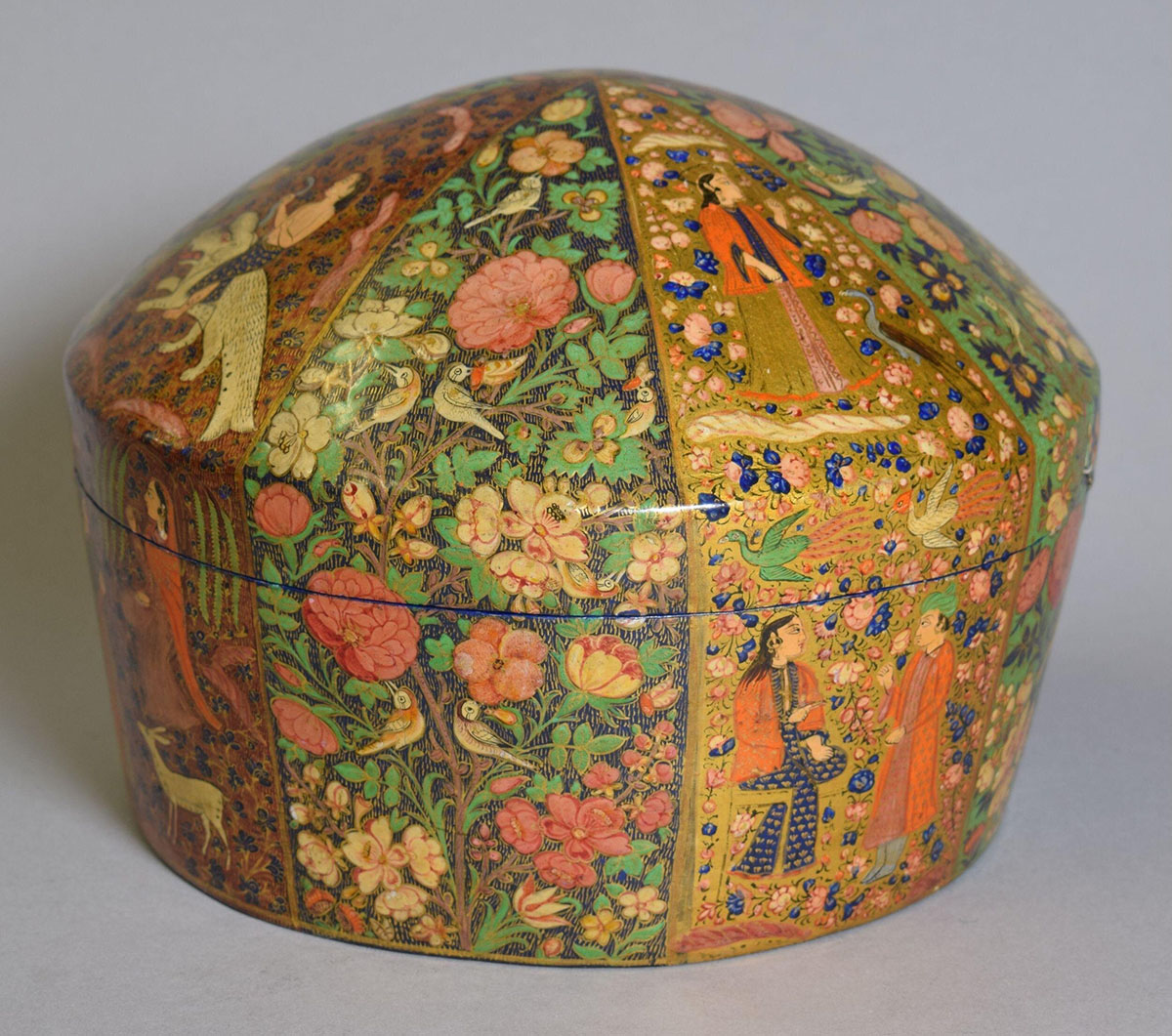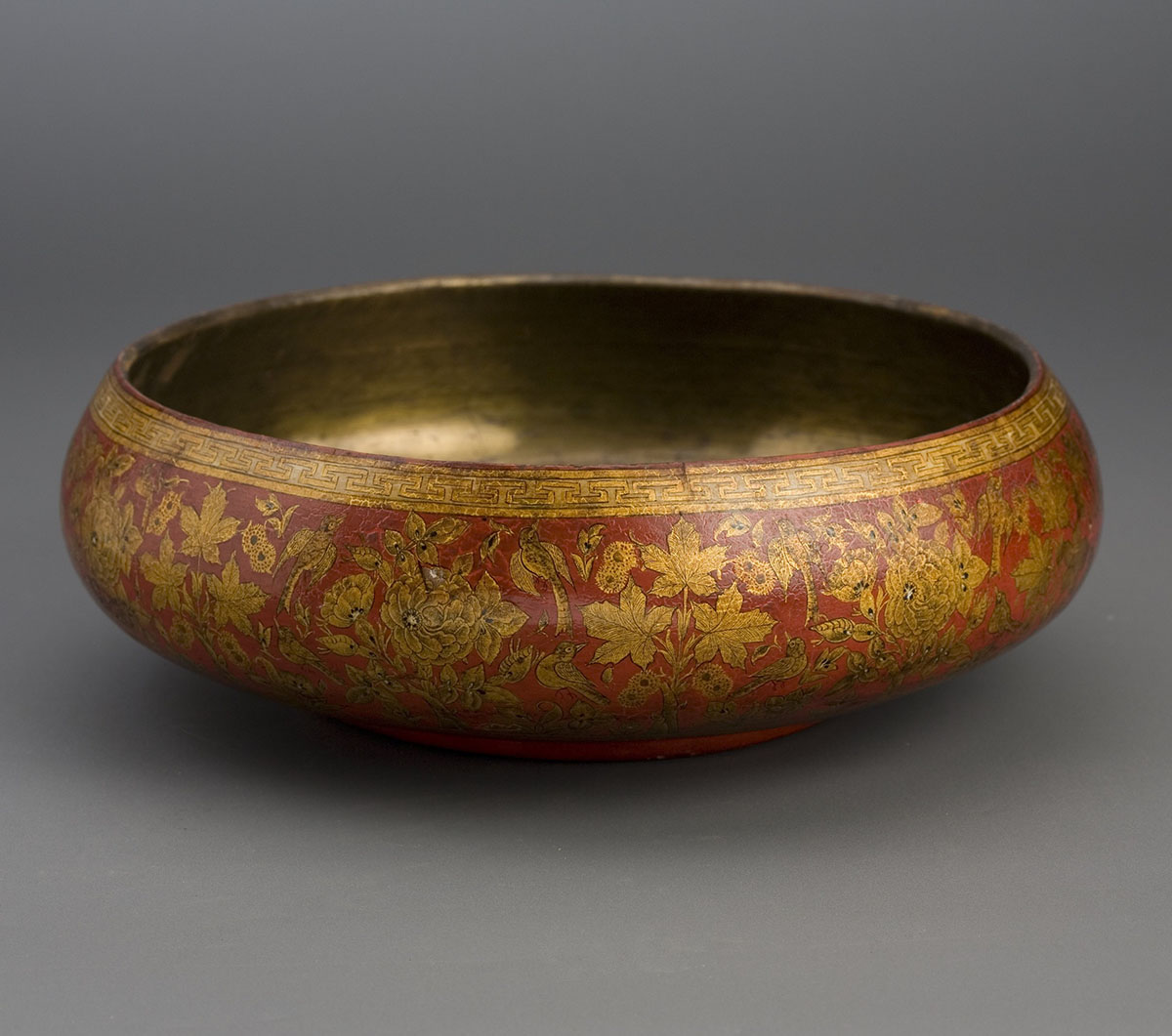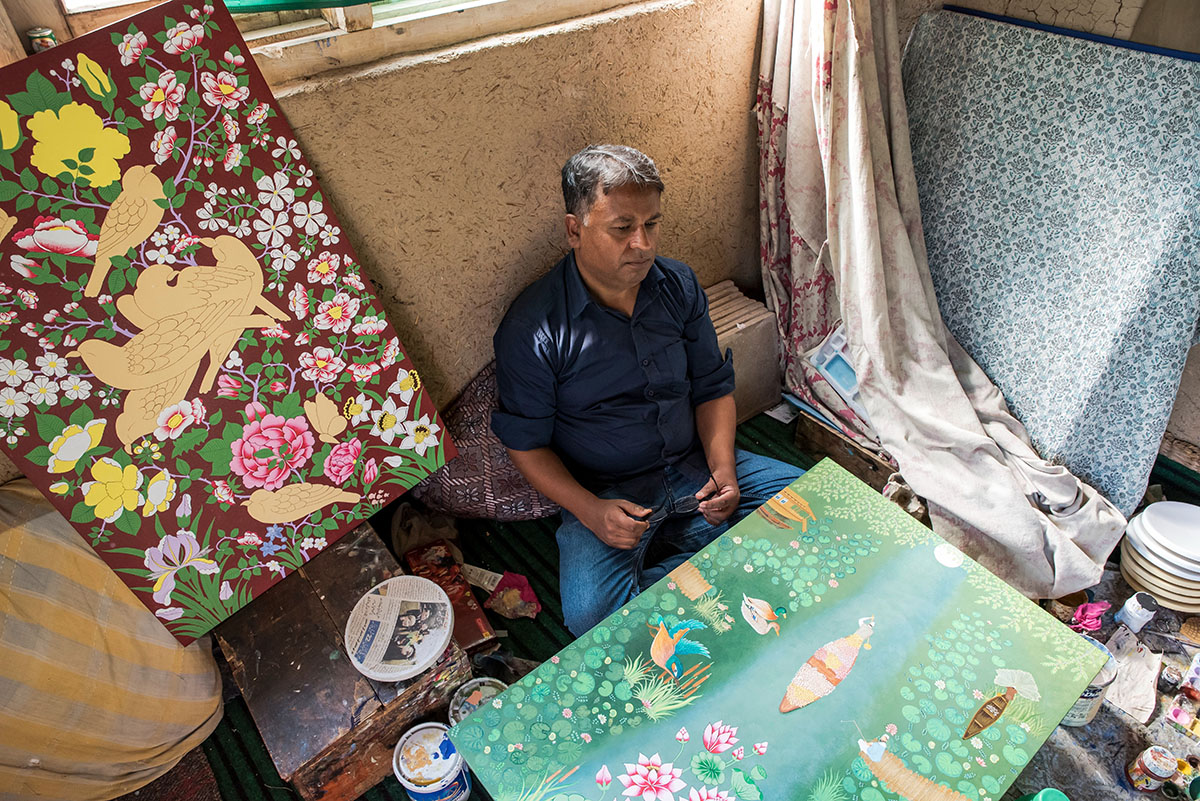ARTICLE
Kari-Kalamdani
A papier-mache craft that originated in the Kashmir region, kari-kalamdani is named after kalamdan, or pen stands, that were first created with this craft. In the thirteenth century, Kashmiri paper or khosur kagaz, was a sought-after commodity for its fine quality, leading to a demand for kalamdans which were decorated with kari-kalamdani. Kari-kalamdani is also referred to as kar-e-munakashi, or the art of decoration.
The process of kari-kalamdani consists of sakthsazi (mould making, traditionally done by the Sunni Muslim craftspersons – sakhtasaz – located in Naupura) and naqqashi (painting, traditionally done by Shia Muslim craftspersons – naqqash – in Zadibal, Kamangarpura and Hasanabad areas of Srinagar). First, the sakhtasaz prepares the paper pulp by pounding waste paper, (that is shredded and soaked at times) along with straw, cloth and copper sulphate. This was primarily done on a pestle and mortar to maintain the consistency of the pulp. The pulp is then shaped with a mould. Usually, clay moulds were used, but have been replaced with Plaster of Paris (POP), wooden or metal moulds. Another layer of paper is used to separate the paper pulp and mould before it is applied to the surface. And finally, glue is applied to hold the entire mixture together. After the pulp has dried, it is removed from the mould, often by carefully sawing it in half and glueing it back together with a thick glue (originally made from a variety of flour and water). This is followed by a layer of glue and chalk which is painted onto the inside and outside surfaces of the object and then smoothed with a baked brick known as kirkut. This is further finished by sanding to achieve a fine, smooth surface for the painting and to avoid any cracks that might be present. In some cases, layers of fuller’s earth, clay or tissue covered with resin and glue may also be used to achieve this smoothness.
The naqqashi work begins by coating the surface with a white solution consisting of gypsum and glue. After drying, the surface is further polished with a wet stone until it is perfectly smooth. Following this, a base colour is applied such as white, blue, black, red or gold. Colours were derived from natural sources, metals or exported from different parts of the world — for metallic colours, fine particles of ground tin, silver or gold were mixed with glue and then polished and rubbed with an agate; black was derived from walnut; yellow was obtained from local flowers; white, derived from white lead, was obtained from Russia; verdigris, a shade of bluish-green, was obtained from Surat or Britain; and lapis lazuli, used for an ultramarine blue, was obtained from Yarkant. On this base, freehand designs are created with brushes created from the hair of Pashmina goats and pencils from cat fur. The areas to be painted in darker colours are first given a base coat in white and then a second coat of the desired colour but the lighter colours are directly painted onto the base. The base layer of colour visible through the designs created on top is known as partaz. The designs created are either raised (resembling relief work) or flat. The object is finally finished with a layer of varnish that is applied on top to seal the paint and provide lustre.
Since most of the motifs are derived from the local landscapes, popular designs and motifs include the hazara, or design of a thousand flowers, featuring roses, hyacinth, irises, etc; chinar (leaves or drawings of the chinar tree); sarav (cypress shrub); zambuk (a type of grass); gul-e-wilayat, or the flowers of foreign lands. Other designs are derived from local flora such as bumtchuthposh (apple blossoms), dainposh (pomegranate), kongposh (saffron flowers) and yemberzal (narcissus). When gold colour or gold leaves are used to create the design, it is called sonposh. Birds such as the kingfisher and bulbul also feature in motifs. The badam tarah, is yet another popular motif derived from the almond trees and popularly recognised as paisley.
Kari-kalamdani was also used extensively within architecture, especially khatamband architecture of Kashmir. For this, a smooth surface was created on the wooden base of the ceilings or walls with paper pulp and layered with polished koshur kagaz to create a fine surface for painting. Examples include the Madin Sahib Mosque, the Shah Hamdan Mosque and the Shalimar Garden. In addition, this technique was also used, particularly during the Mughal period, on doors, panels, palanquins and bedsteads. Presently, kari-kalamdani can be found on small boxes, Christmas ornaments, home decor items, samovars, etc. Fayaz Ahmed Jan, one of the foremost kari-kalamdani artists, was awarded the Padma Shri for his contribution to the craft in 2019.
Bibliography
Our website is currently undergoing maintenance and re-design, due to which we have had to take down some of our bibliographies. While these will be re-published shortly, you can request references for specific articles by writing to hellomapacademy@map-india.org.










